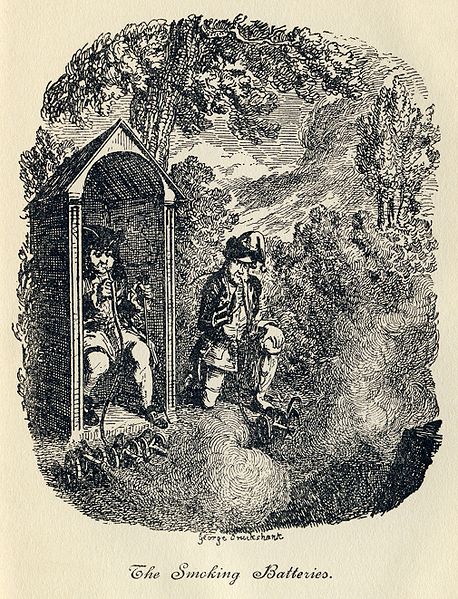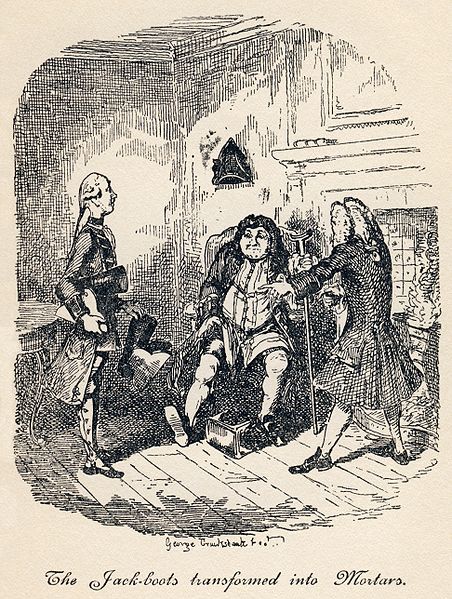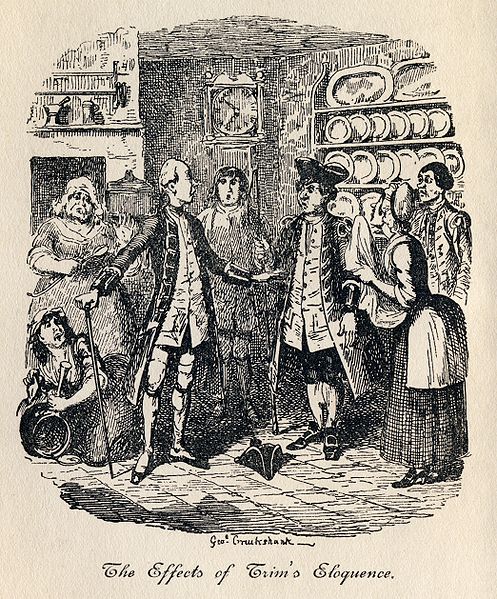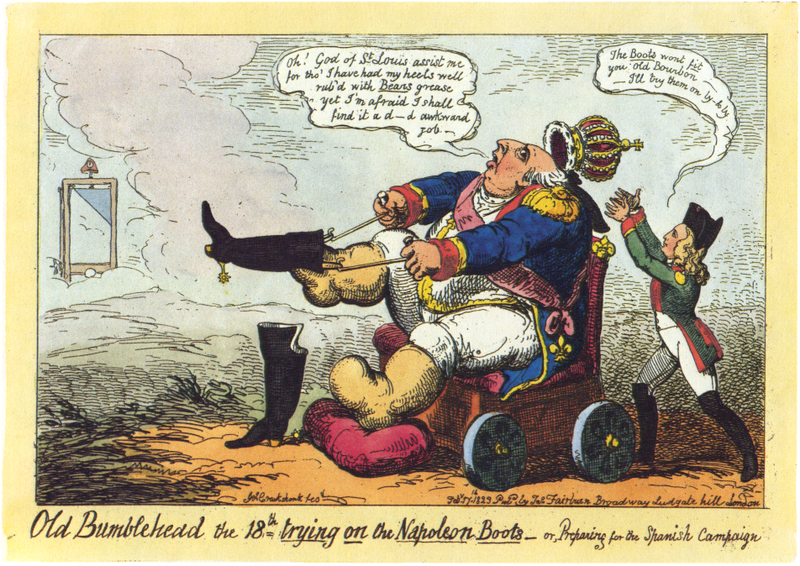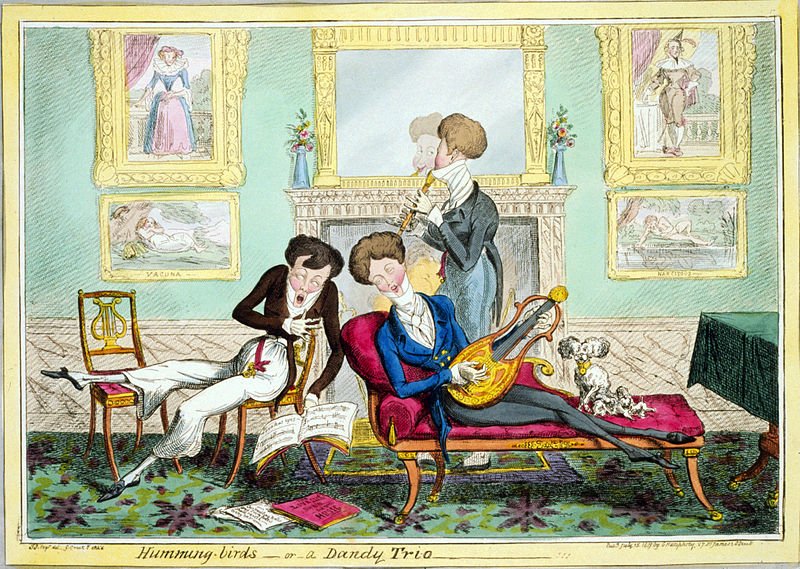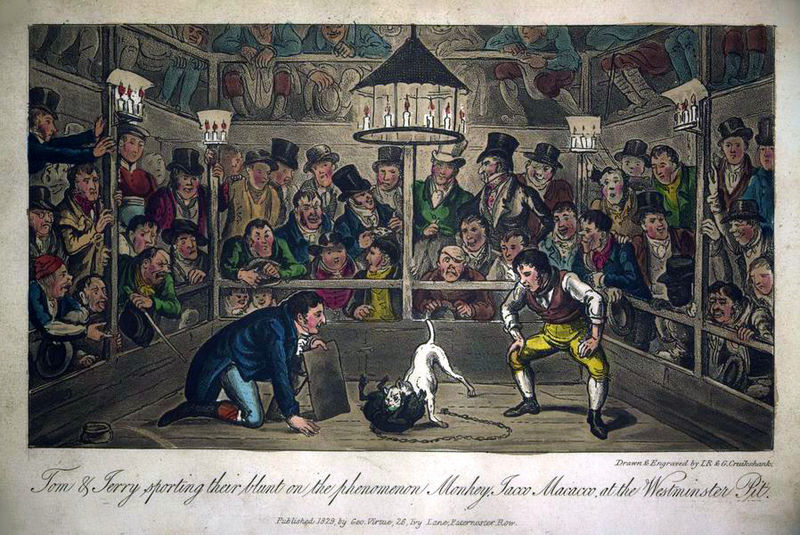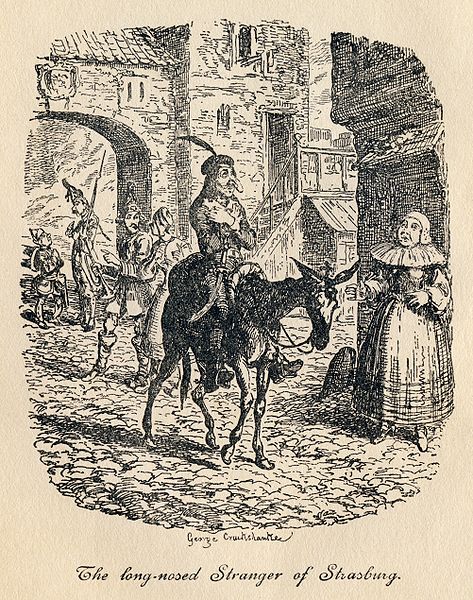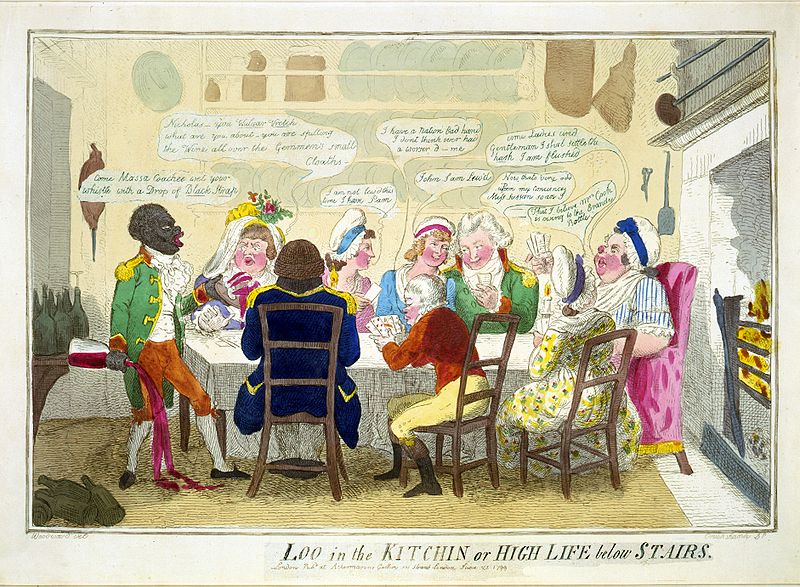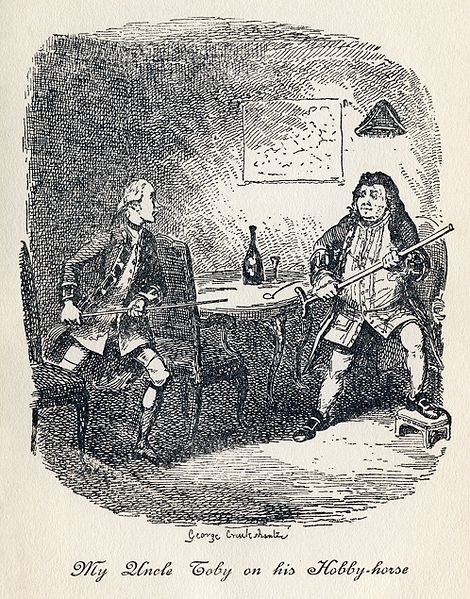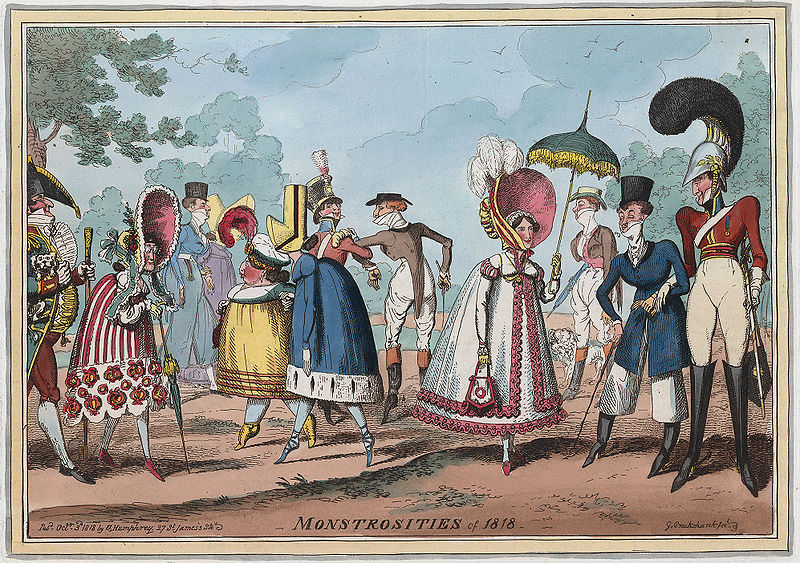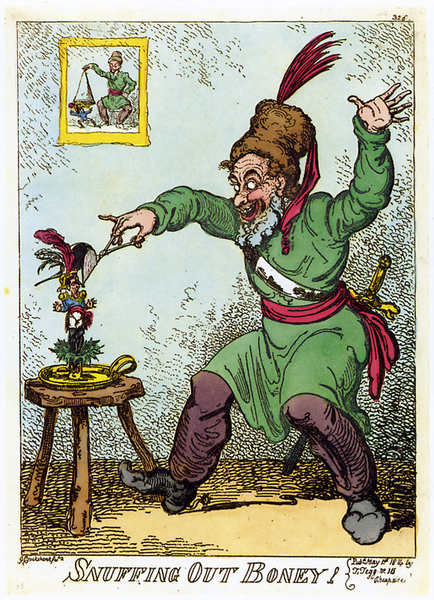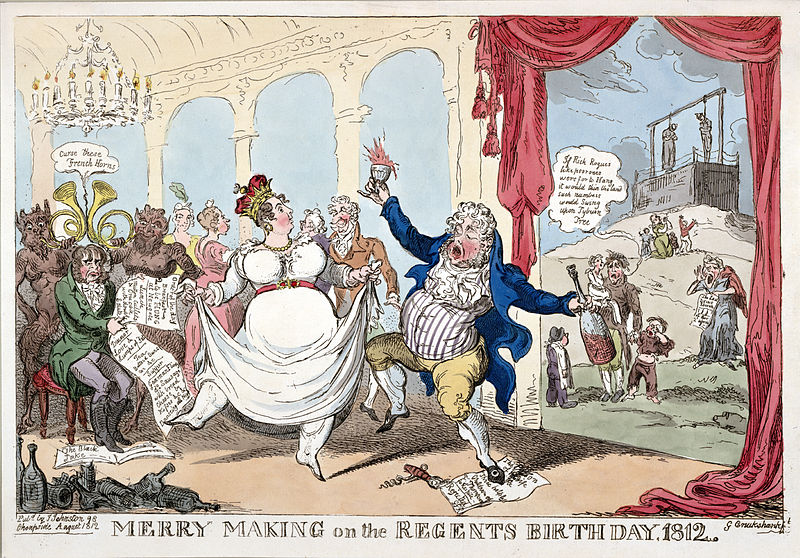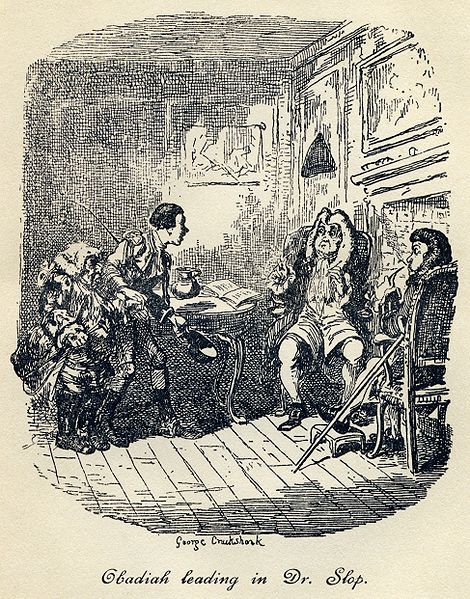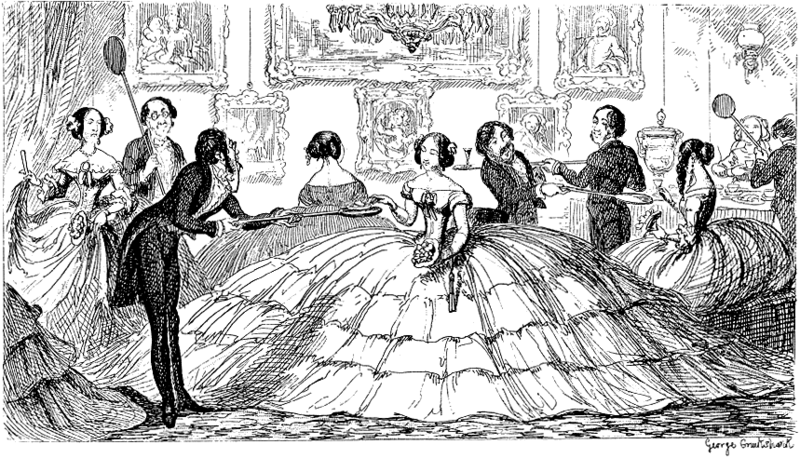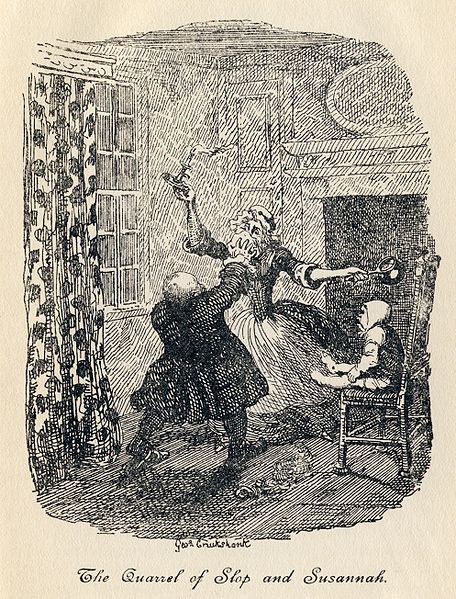<Back to Index>
- Mathematician Abraham Gotthelf Kästner, 1719
- Caricaturist and Illustrator George Cruikshank, 1792
- Grand Pensionary of the Republic of the Seven United Netherlands Francis van Aarssens, 1572
PAGE SPONSOR
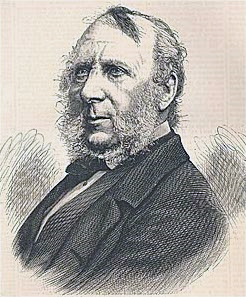
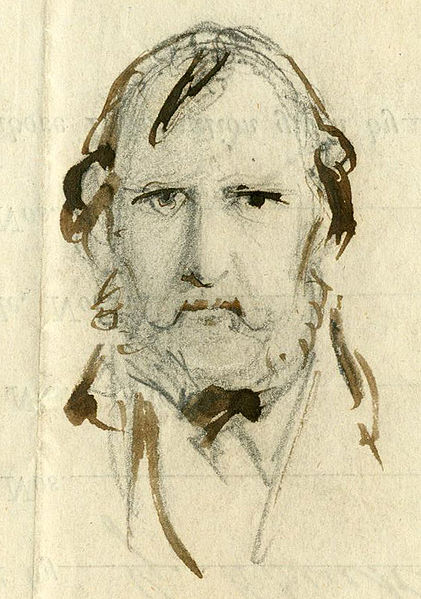
George Cruikshank (27 September 1792 – 1 February 1878) was a British caricaturist and book illustrator, praised as the "modern Hogarth" during his life. His book illustrations for his friend Charles Dickens, and many other authors, reached an international audience.
Cruikshank was born in London. His father, Isaac Cruikshank, was one of the leading caricaturists of the late 1790s and Cruikshank started his career as his father's apprentice and assistant.
His older brother, Isaac Robert, also followed in the family business as a caricaturist and illustrator. Cruikshank's early work was caricature; but in 1823, at the age of 31, he started to focus on book illustration.
On 16 October 1827, he married Mary Ann Walker (1807 – 1849). Two years after her death, on 7 March 1851, he married Eliza Widdison. The two lived at 263 Hampstead Road, North London.
Upon his death, it was discovered that
Cruikshank had fathered 11 illegitimate children with
a mistress named Adelaide Attree, his former servant,
who lived close to where he lived with his wife.
Adelaide was ostensibly married and had taken the
married surname 'Archibold'.
Cruikshank's early career was
renowned for his social caricatures of English
life for popular publications. He achieved early
success collaborating with William Hone in
his political satire The
Political House That Jack Built (1819).
His first major work was Pierce
Egan's Life in London (1821).
This was followed by The
Comic Almanack (1835
– 1853) and Omnibus (1842).
His gained notoriety with his political prints that attacked the royal family and leading politicians. In 1820 he received a royal bribe of £100 for a pledge "not to caricature His Majesty" (George IV of the United Kingdom) "in any immoral situation". His work included a personification of England named John Bull who was developed from about 1790 in conjunction with other British satirical artists such as James Gillray, and Thomas Rowlandson.
Cruikshank replaced one of his major
influences, James Gillray, as England's most
popular satirist. For a generation he delineated Tories, Whigs and
Radicals impartially. Satirical material came to him
from every public event – wars abroad, the
enemies of Britain (he was highly patriotic), the
frolic, among other qualities, such as the weird and
terrible, in which he excelled. His hostility to
enemies of Britain and a crude racism is evident in
his illustrations commissioned to accompany William Maxwell's History
of the Irish rebellion in 1798 (1845)
where his lurid depictions of incidents in the rebellion were
characterised by the simian - like portrayal of Irish
rebels. Among the other racially engaged works of
Cruikshank there were caricatures about the "legal
barbarities" of the Chinese, the subject given by his
friend, Dr. W. Gourley, a participant in the
ideological battle around the Arrow War, 1856 – 60.
For Charles Dickens, Cruikshank illustrated Sketches by Boz (1836), The Mudfog Papers (1837 – 38) and Oliver Twist (1838). Cruikshank even acted in Dickens' amateur theatrical company.
On 30 December 1871 Cruikshank published a letter in The Times which claimed credit for much of the plot of Oliver Twist. The letter launched a fierce controversy around who created the work. Cruikshank was not the first Dickens illustrator to make such a claim. Robert Seymour who illustrated the Pickwick Papers suggested that the idea for that novel was originally his; however, in his preface to the 1867 edition, Dickens strenuously denied any specific input.
The friendship between Cruikshank and Dickens soured further when Cruikshank became a fanatical teetotaler in opposition to Dickens' views of moderation.
In the late 1840s,
Cruikshank's focus shifted from book illustration
to an obsession with temperance and anti - smoking.
Formerly a heavy drinker, he now supported,
lectured to, and supplied illustrations for the National
Temperance Society and
the Total Abstinence Society among others. The
best known of these are The
Bottle, 8 plates (1847), with its sequel, The
Drunkard's Children, 8 plates (1848), with
the ambitious work, The
Worship of Bacchus, published by
subscription after the artist's oil painting, now
in the Tate Gallery,
London. For his efforts he was made vice
president of the National
Temperance League in
1856.
After developing palsy in later life, Cruikshank's health and work began to decline in quality. He died on 1 February 1878 and was originally buried in Kensal Green Cemetery. In November 1878 his remains were exhumed and reburied in St. Paul's Cathedral. Punch magazine, which presumably did not know of his large illegitimate family, said in its obituary: "There never was a purer, simpler, more straightforward or altogether more blameless man. His nature had something childlike in its transparency."
In his lifetime he created nearly 10,000
prints, illustrations, and plates. Collections of his
works are in the British and the Victoria and Albert museums.
